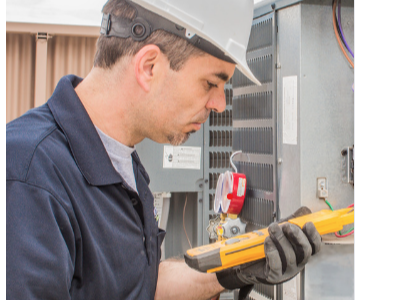
Why is there water in the fan compartment downstream of a cooling coil?
Water in the fan compartment downstream of a cooling coil can be due to several reasons. In HVAC systems, cooling coils dehumidify the air by condensing the moisture, which then forms water droplets. Typically, these droplets are collected in a drain pan and then directed out of the unit. If you see water in the fan compartment, here are some potential causes:
1. Blocked or Clogged Drain Line: This is one of the most common reasons. Over time, dirt, algae, mold, and other debris can block the drain line. If the water can't exit through the drain, it may overflow and end up in the fan compartment.
2. Cracked or Damaged Drain Pan: If the drain pan under the coil has cracks or holes, or if it's rusted through, water can leak out.
3. Improper Drain Pan Slope: The drain pan should have a slight slope towards the drain line to ensure water flows out. If it's level or tilted the wrong way, water may not drain efficiently.
4. Poorly Sealed Coil Compartment: If the compartment isn’t properly sealed, the air can bypass the coil. This can lead to uneven airflow, which can cause water droplets to be blown off the coil and into the fan compartment.
5. High Humidity Conditions: Extremely high humidity conditions can lead to more water than usual being removed from the air. If the drain system isn't equipped to handle such amounts, it could lead to overflows.
6. Frozen Evaporator Coil: If the coil freezes, the ice can melt when the unit cycles off, producing more water than the drain pan can handle. Coil freezing can be due to low refrigerant, airflow problems, dirty coils, or other reasons.
7. Airflow Issues: Reduced airflow across the coil can cause the coil to get too cold and potentially freeze, or it can cause more water to be pulled off the coil than usual. This could be due to dirty filters, obstructions in the ductwork, or problems with the fan itself.
8. Oversized System: An oversized HVAC system can cool the air quickly, but might not run long enough to properly dehumidify. This can lead to excess moisture.
9. Ineffective or Missing Air Seal: An ineffective or absent air seal can allow air to bypass the coil and carry water into areas it shouldn’t.
10. Fan Speed: If the fan speed is set too high, it might blow water off the coil and into the fan compartment.
If you find water in the fan compartment, it's essential to identify the cause and fix it as soon as possible. Persistent water issues can lead to mold growth, damage to components, and reduced system efficiency. If you're not comfortable diagnosing or fixing the issue yourself, consider hiring an HVAC technician.






